are point charges located at points as shown in the figure and S is a spherical Gaussian surface of radius R. Which of the s following is true according to the Gauss's law

None of the above
The correct Answer is:B
Similar Questions
q1,q2,q3 and q4 are point charges located at point as shown in the figure and s is a spherical Gaussian surface of radius R. Which of the following is true according to the Gauss's law
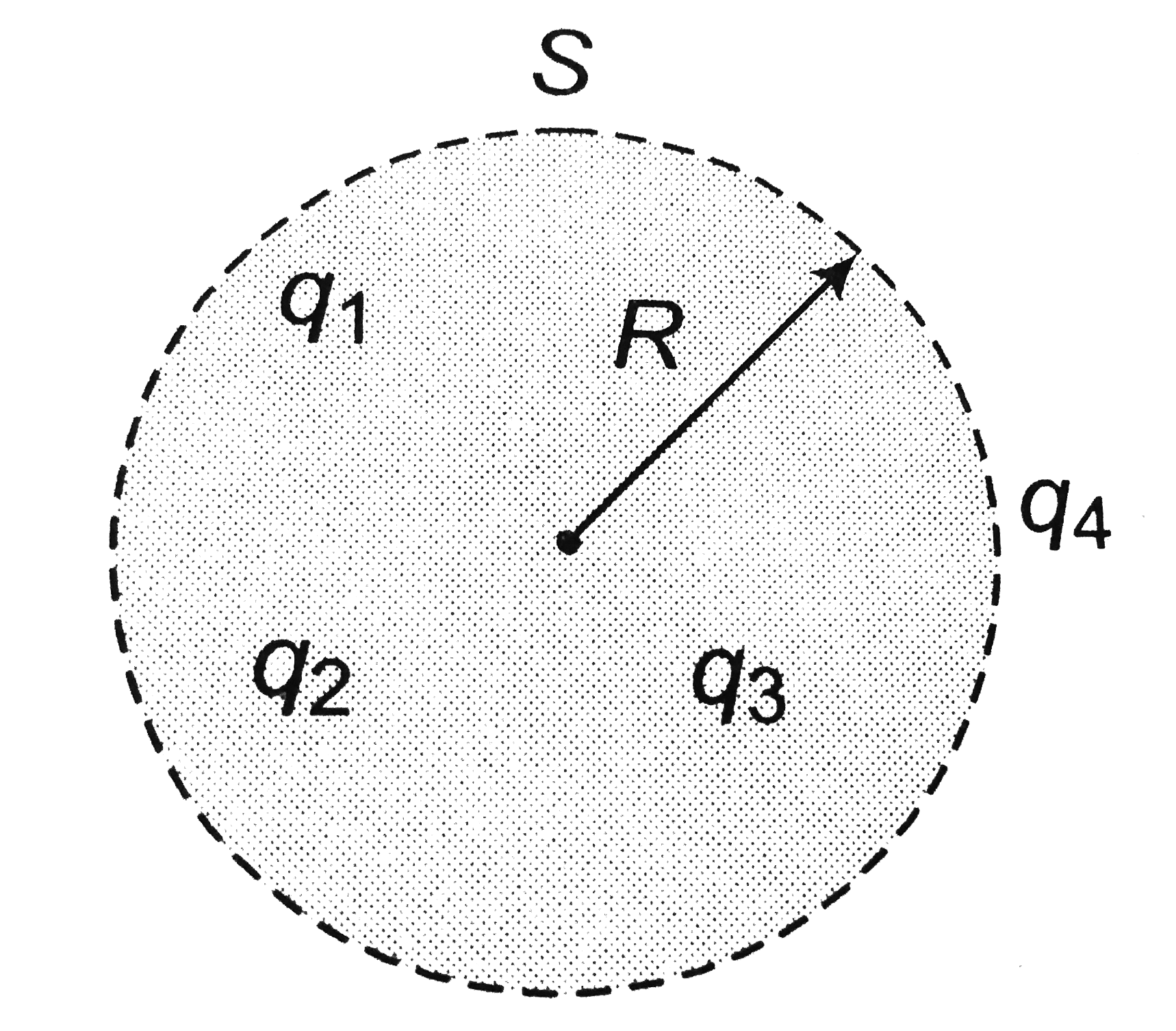
View SolutionRefer to the arrangement of charges in Fig and a Gaussian surface of radius R with Q at the centre. Then
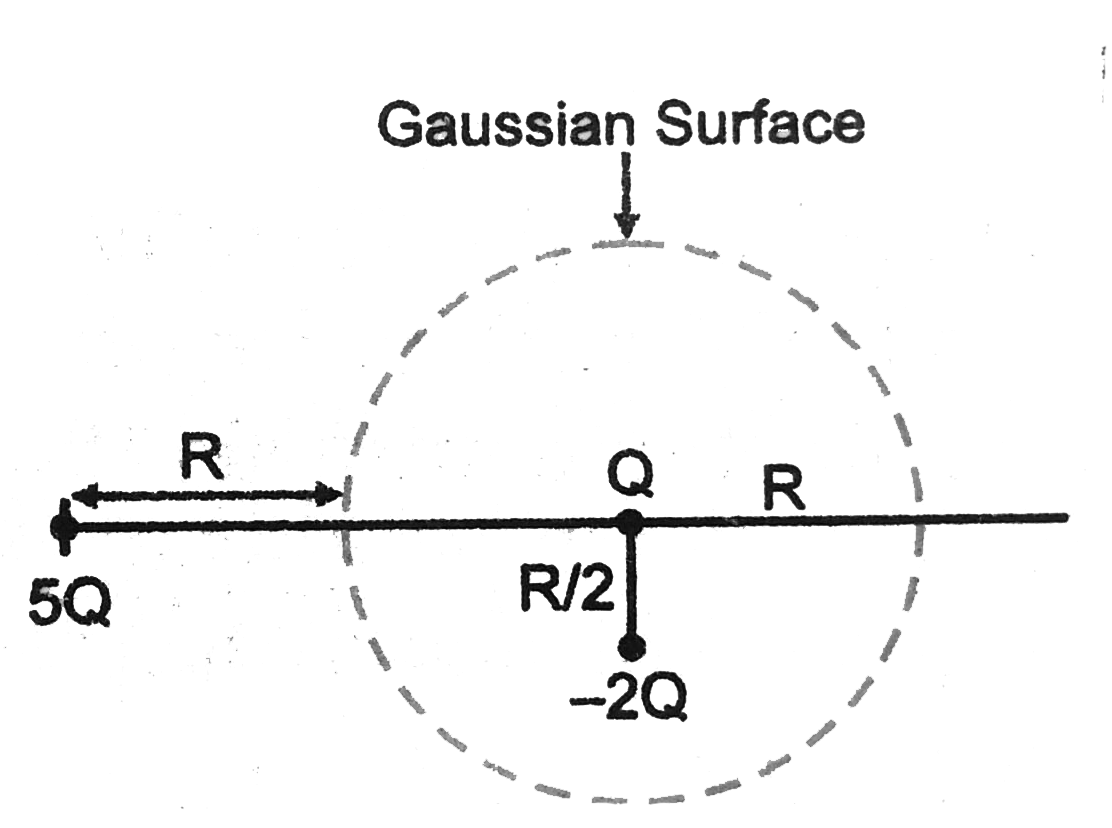
View Solution
Knowledge Check
q1,q2,q3 and q4 are point charges located at point as shown in the figure and S is a spherical Gaussian surface of radius R. Which of the following is true according to the Gauss's law
 A∮s(→E1+→E2+→E3).d→A=q1+q2+q32ε0B∮s(→E1+→E2+→E3).d→A=(q1+q2+q3)ε0C∮s(→E1+→E2+→E3).d→A=(q1+q2+q3+q4)2ε0DNone of these
A∮s(→E1+→E2+→E3).d→A=q1+q2+q32ε0B∮s(→E1+→E2+→E3).d→A=(q1+q2+q3)ε0C∮s(→E1+→E2+→E3).d→A=(q1+q2+q3+q4)2ε0DNone of theseThe value of charge q1,q2andq3 as shown in the figure are
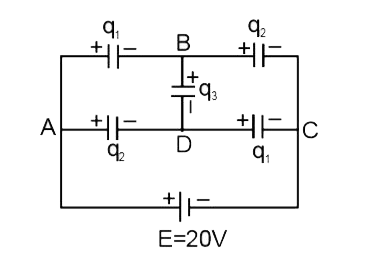 Aq1=32μC,q2=24μC,q3=−8μCBq1=48μc,q2=16μC,q3=+8μCCq1=32μC,q2=24μC,q3=+8μCDq1=3μC,q2=4μC,q3=+2μC
Aq1=32μC,q2=24μC,q3=−8μCBq1=48μc,q2=16μC,q3=+8μCCq1=32μC,q2=24μC,q3=+8μCDq1=3μC,q2=4μC,q3=+2μCRefer to the arrangement of charges in Fig and a Gaussian surface of radius R with Q at the centre. Then
 Atotal flux through the surface of the sphere is −Q∈0Bfield on the surface of the sphere si −Q4π∈0R2Cflux through the surface of sphere due to 5Q is zero.Dfield on the surface of sphere due to −2Q is same everywhere
Atotal flux through the surface of the sphere is −Q∈0Bfield on the surface of the sphere si −Q4π∈0R2Cflux through the surface of sphere due to 5Q is zero.Dfield on the surface of sphere due to −2Q is same everywhere
five charge q1,q2,q3,q4and q5 are fixed at their positions as shown in figure .s is Gaussian surface .The Gauss's law is given by ∮→E.→ds=qε0
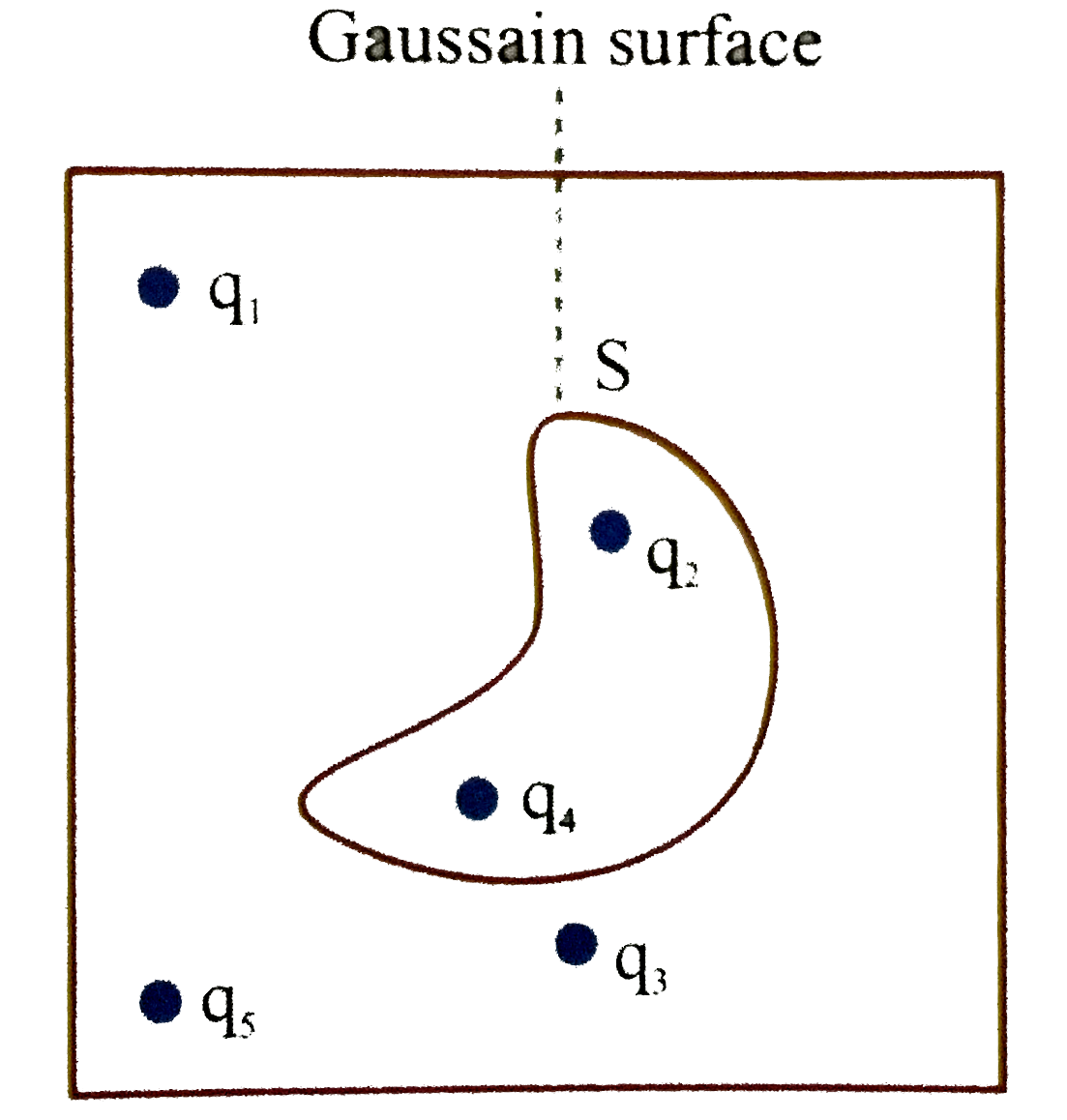
Which of the following statement is correct?
View SolutionFive charges q1,q2,q3,q4andq5 are fixed at their positions as shown in figure. S is Gaussian surface. The Gauss's law is given by ∮→ES⋅→ds=qε0. Which of the following statements is correct?
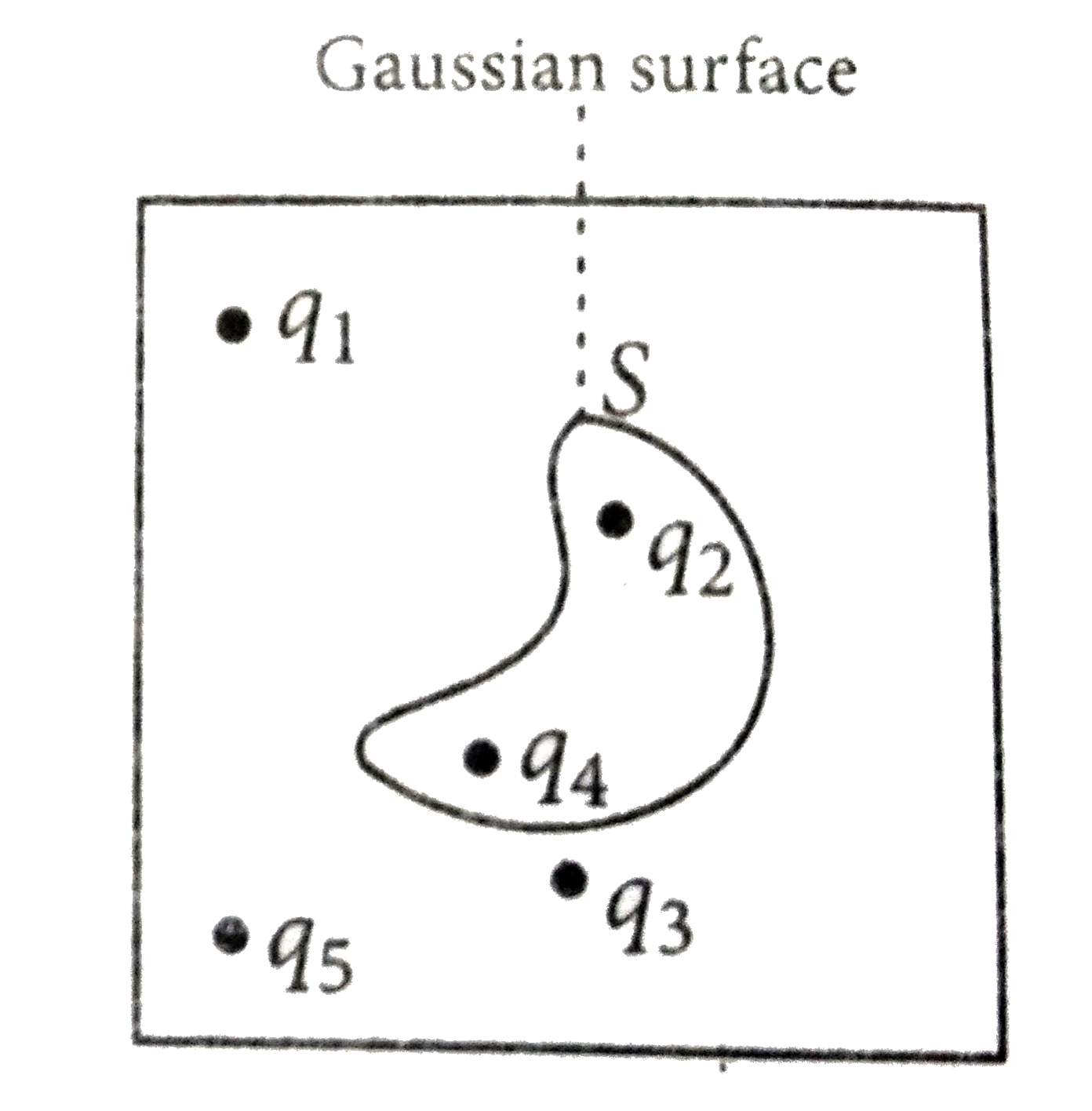
View SolutionConsider a Gaussian spherical surface covering a dipole of charge q and -q, then

View Solutionfive charge q1,q2,q3,q4and q5 are fixed at their positions as shown in figure .s is Gaussian surface .The Gauss's law is given by ∮→E.→ds=qε0

Which of the following statement is correct?
View SolutionConsider a Gaussian spherical surface covering a dipole of charge q and -q, then

View Solution
